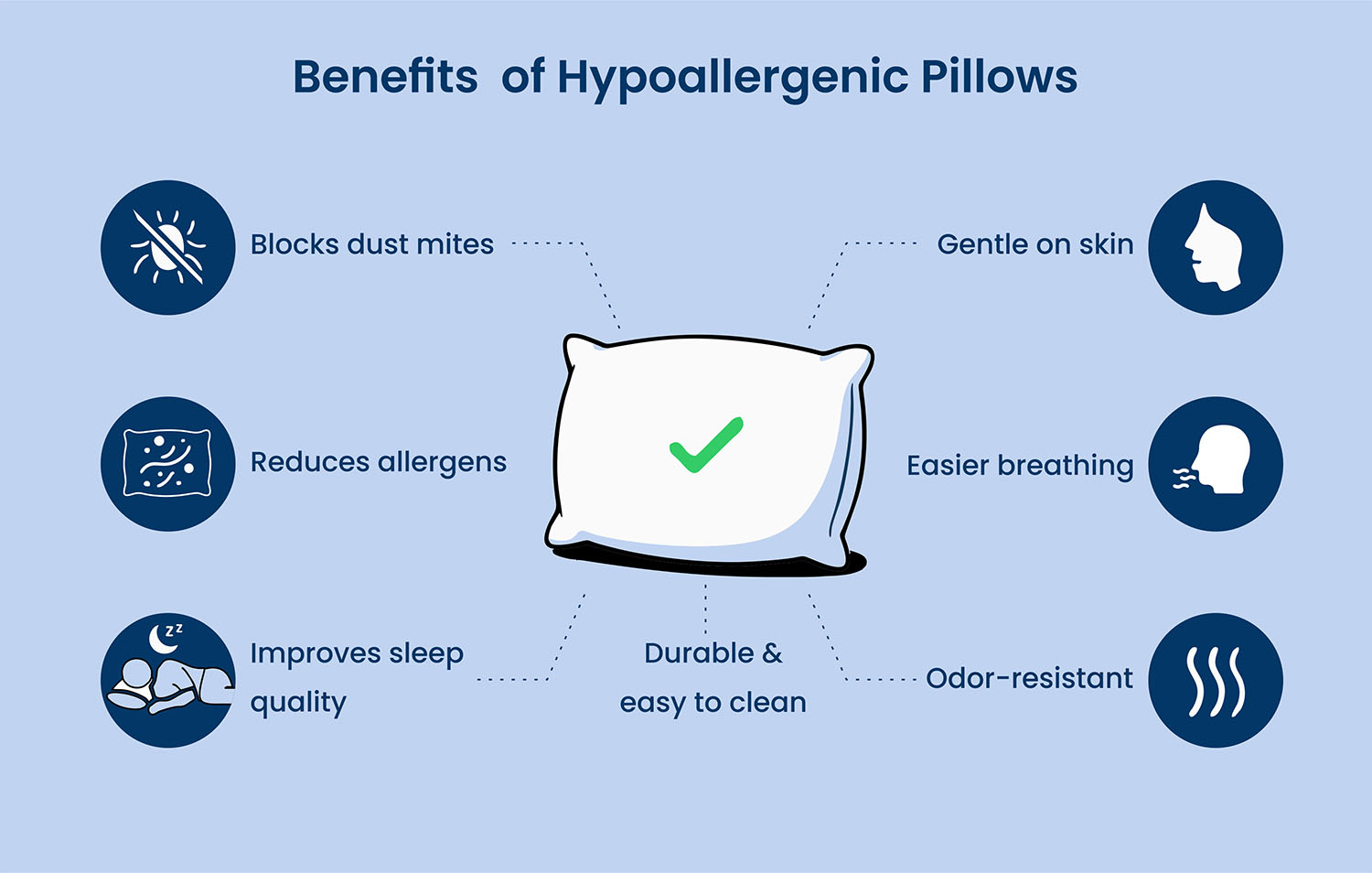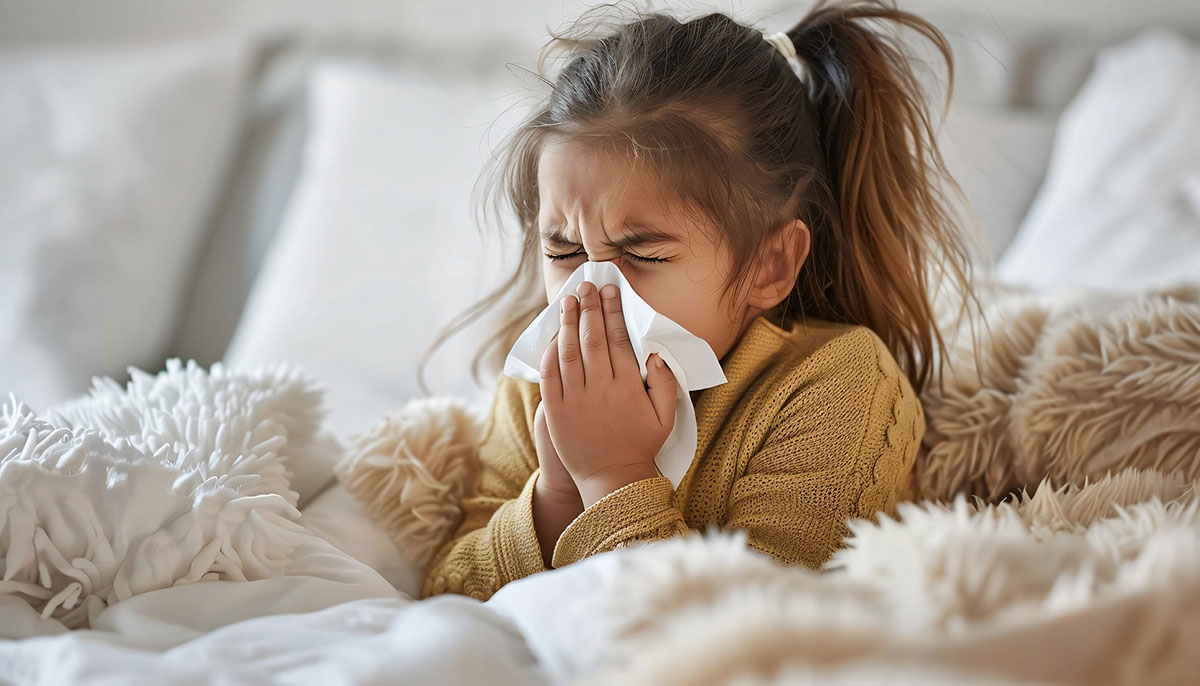Allergies affect up to 30 percent of adults and 40 percent of children in the world. The most common allergens in homes are dust mites, pet dander, and molds. The presence of these allergens, particularly during the night when our bedding can be a sanctuary for bed bugs or dust mites, has killed demand, for products designed to reduce further allergen exposure during sleep. Hypoallergenic pillows are advertised as hypoallergenic, exposure to common allergens will be reduced, but do hypoallergenic pillows make a difference, or are they just clever marketing? Let’s review the details.
What is a Hypoallergenic Pillow?
A hypoallergenic pillow is designed to help decrease the possibility of exposure to common allergens. Common allergenic triggers for the human body such as dust mites, mold, and pet dander can be reduced with good science used to avoid moisture, inhibit microorganism growth, and create an environment inhospitable to allergens. Hypoallergenic filled pillows may have tightly woven covers, synthetic fills, and treated natural fills that help to reduce allergen exposure and promote cleaner, healthier sleep.
Purpose of Hypoallergenic Pillows
The core or primary benefit of hypoallergenic pillows is for the purpose of reduction of exposure to allergens that may cause respiratory conditions, skin irritation, or disturbed sleep. By using materials and designs to resist dust mites, mold or other common irritants, hypoallergenic pillows help to mitigate factors making the sleep environment 'cleaner.' This is particularly beneficial for people who have persistent asthma, allergic rhinitis or people with sensitive or reactive skin. Less exposure to hidden allergens in bedding should be supportive of healthier and more comfortable rest.
Who Should Use Hypoallergenic Pillows?
Hypoallergenic pillows can be beneficial for many different types of people, such as:
- Those who experience allergic rhinitis, asthma, or eczema.
- Those who experience nighttime nasal congestion or cough.
- Those who live in humid climates that promote dust mites or mold.
- Anyone seeking a cleaner and lower-allergen sleep environment.
Even people who have not been diagnosed with allergies may opt for hypoallergenic bedding as a preventative measure.
Allergies That Affect Your Sleep
Several common indoor allergens can lead to poor sleep quality. While you sleep, exposure to allergens can cause congestion, sneezing, coughing, itchy eyes, or skin irritation. All of these ailments can disrupt your deep sleep, which is critical to good sleep cycles. The following is a closer look at the major allergens that interfere with your ability to get quality sleep:
Dust MitesDust mites are one of the most common triggers of indoor allergies. They are microscopic creatures that thrive in warm and humid environments and feed off the dead skin cells that humans shed. Pillows, mattresses, and bedding are a cozy environment for dust mites. Dust mites produce waste, and the fetid waste of dust mites contains proteins that trigger allergic reactions in up to 70% of allergens, commonly causing sneezing, nasal congestion, and watery eyes while you sleep.
Pet DanderEven if your pets do not sleep on your bedding, their dander – a type of skin or hair flakes alone – collects in your bedding/pillow. Pet dander is very light and can linger in the air, making regulation of it difficult. Pet dander may trigger symptoms like itchy skin, coughing, or wheezing, in particular for those sensitive to cats, dogs, or other household animals.
Mold SporesMold grows in damp places that lack ventilation and releases spores in the air. It contains allergens that can impact you inside your home, especially in the tropics, or any location where airflow is limited in a bedroom. Mold spores you breathe in during sleep can cause nasal congestion, throat irritation, or trigger asthma symptoms in some sensitive individuals.
PollenAlthough we think of pollen as an outdoor allergen, it finds its way indoors by hair, clothing, or being blown in by open doors or windows. Once inside, it can settle into bedding and pillows, continuing to provoke your allergy symptoms at night. People who suffer from seasonal allergies often report increased nighttime sneezing and congestion when pollen counts are high.
How Allergies Impact Sleep
If you have allergens in your sleep environment, those allergens may cause:
- Interrupting sleep patterns due to waking frequently from your allergy symptoms
- Limiting deep sleep which is important for body recover
- Daytime fatigue and reduced concentration
- Increased likelihood of aggravating snoring or sleep apnea in some circumstances
Controlling your exposure to allergens in your sleep environment is a first step to getting better rest and sleep.

Benefits of Hypoallergenic Pillows
Hypoallergenic pillows do more than provide comfort – they are engineered to provide a healthier sleeping environment by reducing allergens you may be exposed to when sleeping. Some of the benefits include:
1. Decreased exposure to allergens
Hypoallergenic pillows are made with materials that repel dust mites, mold, bacteria, pet dander and contaminants that limit your exposure to irritants that can stir up allergies, asthma, or skin reactions while sleeping.
2. Improved Rhinitis
Limiting allergen collection in pillows can encourage better and clearer breathing when sleeping, which may improve nighttime nasal resistance, coughing or wheezing for susceptible individuals.
3. Improved Sleep Quality
Fewer patterns of allergy types of sleep, can improve the continuity of your sleep cycles, giving you deeper and more restorative sleep to carry to the day ahead.
4. Kind to Sensitive Skin
Most hypoallergenic pillows contain soft, gentle, and non-irritating fabrics and fillings, making them a decent selection for anyone with eczema or other similar sensitivities.
5. Improved Hygiene
Hypoallergenic pillows also have moisture-wicking and antimicrobial elements that keep your bedding fresher for longer, which helps lessen accidental odors and the need to wash it.
6. Longevity
Since hypoallergenic pillows discourage allergen accumulation and microbial growth, they will also last longer and keep their support and comfort longer than non-hypoallergenic pillows.
Is a Hypoallergenic Pillow Safe?
Yes, hypoallergenic pillows are safe for everyone, allergy sufferers, asthma sufferers, or people with sensitive skin. Hypoallergenic pillows are best designed to reduce exposure to common irritants and are usually made from non-toxic, skin-friendly materials.
Most manufacturers will shy away from harsh chemicals and additives that may cause adverse reactions. However, it is always safe to:
- Look for labels that have materials you may be personally sensitive to (latex, certain synthetic fibers).
- Look for certification (OEKO-TEX®, CertiPUR-US®) for safety and environmental standards.
- Let new pillows air out a little bit before using them to get rid of any residual or manufacturing odors.
If you have a known sensitivity to specific fabrics or treatments, consult your healthcare provider or allergist for guidance on the best pillow choice for you.
Final Thoughts
Hypoallergenic pillows are not a solution for allergies, but they directly contribute to a clean and healthy sleeping environment. By providing a reduction in exposure to dust mites, pet dander, mold spores, and other common allergens, a hypoallergenic pillow may assist in better breathing, and result in fewer allergy symptoms while sleeping and improve sleep quality overall.
For people suffering from allergies and for anyone looking to improve the overall hygiene of their bedroom, choosing a good quality, hypoallergenic pillow along with cleanliness and controlling humidity could also provide a better chance of biased improvement. Just think about your sensitivities, and look for materials with reputable certifications to ensure comfort and safety.












